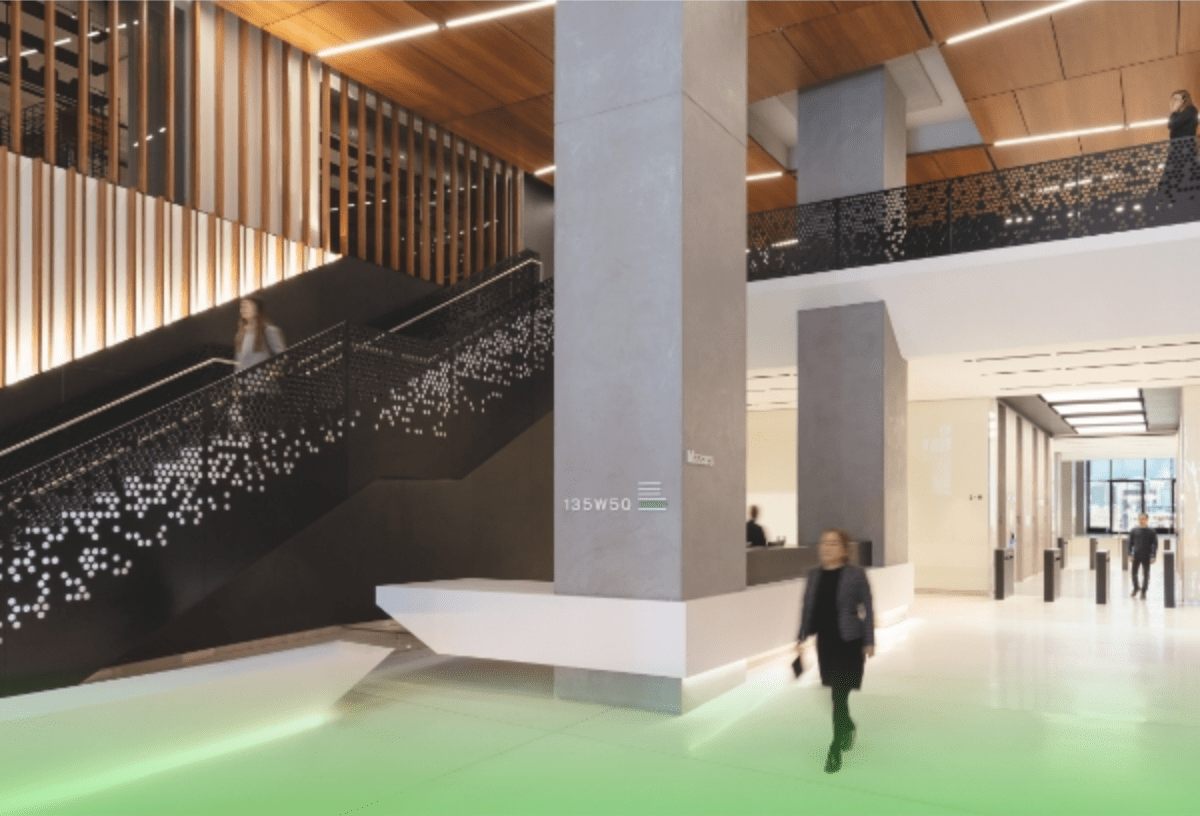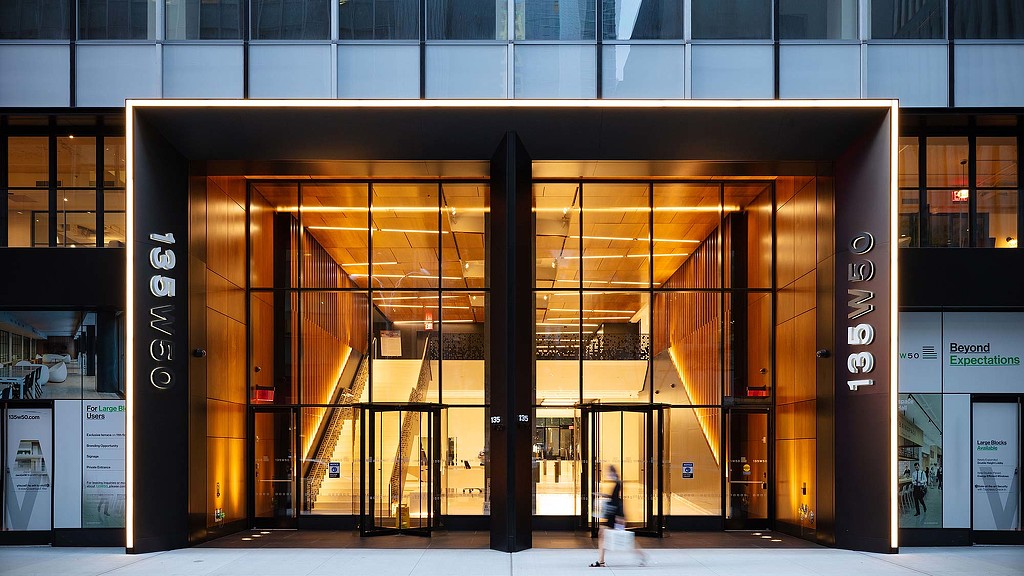- Bold Efforts
- Posts
- 🏢 Office Buildings in Crisis: The Collapse of a Manhattan Office Icon
🏢 Office Buildings in Crisis: The Collapse of a Manhattan Office Icon
A case study on the risks and realities of modern office investments

Hello everyone! 👋
Welcome back to Bold Efforts! Today, we uncover a monumental shift in the commercial real estate market through the dramatic downfall of a once-iconic Manhattan office building.
In the heart of Midtown Manhattan, a story unfolds that encapsulates the seismic shifts in the commercial real estate market. This is the tale of the Sports Illustrated Building at 135 West 50th Street — a towering relic of a bygone era, now a symbol of the volatile future of office spaces.
Let’s get started!

135 West 50th Street, Midtown Manhattan, New York
Top reads this week
Curated news, articles, and opinion-pieces about the future of work and living - just for you.
A. Tech CEOs are backtracking on RTO mandates—now, just 3% want workers in the office full-time [Fortune]
Flex Index analyzed 2,670 tech companies and found that 79% are fully flexible and 56% now offer an "employee’s choice" model, confirming that flexible working is here to stay.
B. Insights from MIT World Real Estate Forum. [MIT Sloan]
About a fifth of U.S. office space is empty, with commercial real estate prices down 11% since March 2022. And this while residential, retail, and hotels see high occupancy as work spreads closer to homes in new towns and various city areas.
This echoes the insights shared in the Bold Efforts issue on "Beyond the Office."
C. Return to Office led to more than expected attrition in US [The Hill]
Research from Bamboo HR and Greenhouse Research reveals that RTO was used as a workforce reduction tool, with 42% of companies experiencing higher employee attrition than expected, causing significant operational disruptions and recruitment challenges.
D. Return-to-office mandates hurt employee retention [Ars Technica]
A survey of over 4,400 US workers reveals that remote employees are 27% more likely to look forward to their jobs. The comments section on this one is worth a read if you’re looking to tickle your funny bone!
Liked what you read? Stay informed with unique insights on the future of work and living. Subscribe to the Bold Efforts newsletter to get these stories and insights in your inbox every Thursday.
Office Spaces in Crisis: The Collapse of a Manhattan Office Icon
The Story of 135 W 50th Street
In the heart of Midtown Manhattan, the once-thriving 135 W 50th Street office building, popularly known as the Sports Illustrated Building, has faced a dramatic downfall. As one of the iconic office spaces in Manhattan, its story encapsulates the larger narrative of commercial real estate challenges post-pandemic.

Sports Illustrated Building
Built in 1963, this 23-story, 925,000 square-foot office block was not just an office building but a symbol of mid-century modern architecture. It once housed illustrious tenants like jewelry retailer Zales, the New York Telephone Company (Verizon’s predecessor), and Sports Illustrated (which gave it its popular name). Its prime location, just a block away from Radio City Music Hall and Rockefeller Center, offered stunning views and a prestigious address.
This office building has one of the best possible locations in Midtown Manhattan.

The official website of the building describes its offering as follows:
“135 W 50th Street offers tenants some of the most vibrant and community-oriented office space in all of New York City.”
Enter UBS
UBS Group AG, headquartered in Zürich and Basel, is Switzerland's largest banking institution and the world's largest private bank, with a presence in all major financial centers. UBS is also one of the biggest commercial real estate managers in the world. UBS Realty Investors LLC, a subsidiary of UBS, manages its real estate business in US.

In 2006, an investment fund managed by UBS Realty Investors bought the Sports Illustrated building for a staggering $332 million.
UBS saw immense potential in the property, believing it to be a lucrative long-term investment, and, in 2012, it also purchased the land underneath for another $279 million.
Restructuring and Renovation
By 2019, UBS made a strategic move, selling the land to Safehold for $285 million but retaining control through a long-term ground lease. This was a bet on the continually rising office rents in a pre-pandemic world. A 6 million USD profit on prime Manhattan land in 7 years - deal of the decade!

UBS then invested $76 million in renovations from 2019 to 2021 using the help of Gensler, a global architecture and design firm, expecting a lucrative return.
The onset of the COVID-19 pandemic in early 2020 upended the office market, drastically altering the dynamics of commercial real estate and accelerating the shift towards remote work. By early 2021, the building was only 40% leased.
As work became the new norm, occupancy plummeted to 35%. This dramatic drop in rental income couldn't sustain the ground lease, signaling a broader crisis in the office space market.
The rise of distributed work and borderless hiring is expected to further deepen the crisis of traditional office spaces.
End game
The once golden investment was now a financial albatross. However, nobody at UBS was researching ‘Future of Work and Living’ at that time.
In June 2024, UBS and the renowned George Comfort & Sons put the building on the market through Ten-X, a commercial real estate auctions platform, hoping for a reprieve. (This closed listing has been taken off the market since I started putting this piece together but you can still view it through Wayback machine on the link below.)
However, only one bid came through the online auction, and in just 2 days, the building was sold for a mere $8.5 million.

The $399.5 million loss on their $408 million investment marked a sobering end to their grand aspirations.
Broader Implications
This dramatic fall reflects the broader woes of the commercial real estate sector, which faces the triple whammy of falling prices, plummeting demand, and rising interest rates. The post-pandemic rise of remote work has crushed the demand for office spaces, leading to soaring vacancy rates.
"The building certainly wasn't the greatest asset we owned, but it was a solid property. What's shocking is how fast the valuations have dropped now that we've seemingly reached bottom, or close to it."
The largest bankruptcy of 2023, the failure of the Pennsylvania Real Estate Investment Trust, underscores this crisis. The real estate company with $1 billion in liabilities filed for bankruptcy twice in a period of three years!
With $2.56 trillion in commercial real estate loans maturing over the next five years in US, and $1.4 trillion held by banks, many debtors will struggle to refinance at higher interest rates on devalued properties.
I think that’s what a lot of CEOs today misunderstand. They keep mashing the go back to 2019 button, and they see it’s not working. Then they just push harder, and then you have this really toxic relationship.”
UBS’s experience with the Sports Illustrated Building is a cautionary tale of the rapid changes and risks in the commercial real estate market. It highlights the necessity for foresight and adaptability in navigating the uncertain future of work and office spaces. We are witnessing similar CRE trends in prices and occupancy rates across major cities around the globe.
Imagine this scenario replicated hundreds of times, highlighting the growing concerns in the commercial real estate market. The fall of 135 W 50th Street is a stark warning for investors. As remote work continues to gain traction, traditional office spaces must adapt to avoid similar declines. The future of work is evolving, necessitating a shift in how we approach office spaces. As more and more firms adopt virtual-first, the occupancy and valuations of traditional offices is expected to further decline.
The fall of 135 W 50th Street underscores the urgent need for innovation in commercial real estate. As distributed work reshapes the market, investors must prioritize adaptable, multi-functional spaces. This moment presents a unique opportunity to rethink and redesign our work environments for a more flexible and resilient future.
How did you enjoy this issue? |
Want more cool stuff about the future of work? Hit that subscribe button and get fresh insights straight to your inbox every week.
Thanks for reading!
Kartik







Reply